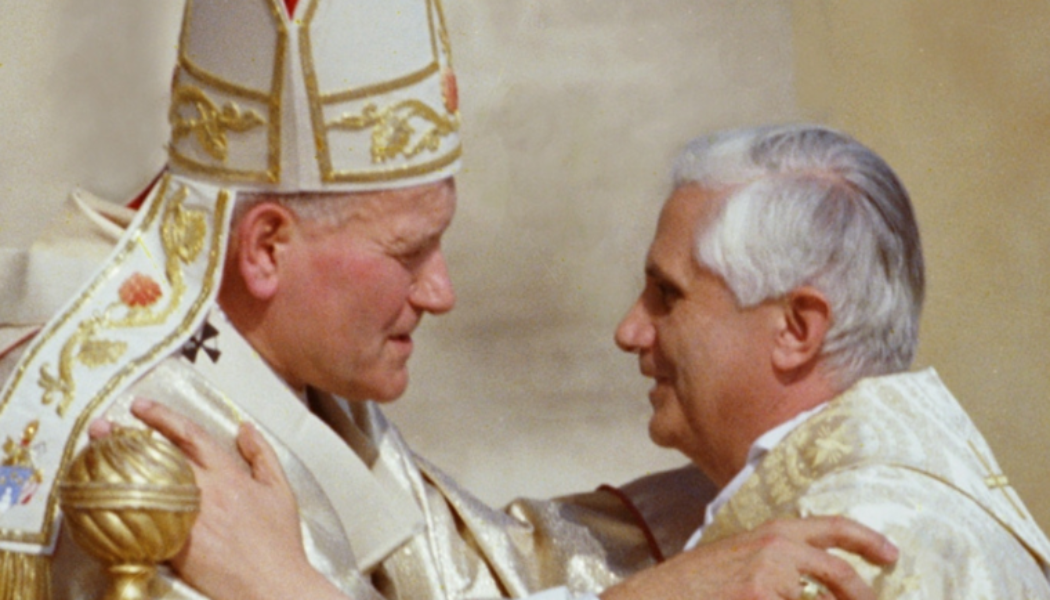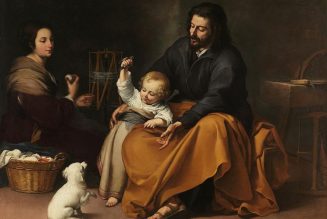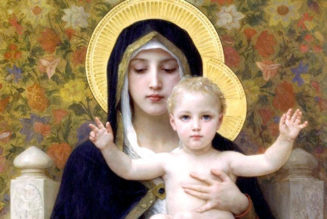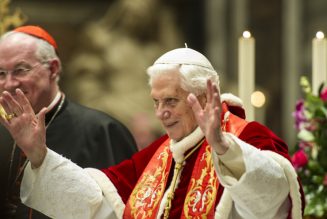
The “reasonableness of faith” is what Pope Benedict XVI taught to an age hostile to faith and lacking confidence in reason.
In his “Spiritual Testament,” written in 2006 and released upon his death, Pope Emeritus Benedict XVI wrote about faith, which was to be expected, but in a way unusual for a final testament. He desired that, after his death, the world hear one more time that the faith was reasonable and that philosophical and scientific approaches that claimed otherwise were themselves deficient in their reasoning.
In Life and Death: Faith!
Benedict, the consummate scholar, makes an argument from the grave in his “Spiritual Testament”:
“It often seems that science — the natural sciences on the one hand and historical research (especially exegesis of Sacred Scripture) on the other — are able to offer irrefutable results at odds with the Catholic faith. I have experienced the transformations of the natural sciences since long ago and have been able to see how, on the contrary, apparent certainties against the faith have vanished, proving to be not science, but philosophical interpretations only apparently pertaining to science. …
“I saw how out of the tangle of assumptions the reasonableness of faith emerged and emerges again. Jesus Christ is truly the way, the truth and the life — and the Church, with all its insufficiencies, is truly His body.”
Benedict, the great interpreter of Vatican II, was also a faithful son of Vatican I (1869-1870), which taught that both faith and reason were paths to truth and that even by reason alone we could know certain limited things about God.
In choosing to dedicate his final testament to the “reasonableness of faith,” Benedict summarized his life’s work, a proposal perseveringly pressed as a priest, professor, prefect and pope, that man could know the truth about himself, the world and God.
Benedict’s lifetime proposal had three high points: Fides et Ratio, Lumen Fidei and the Year of Faith.
On the relationship of faith, reason and truth, the Church has authoritative teaching in two recent encyclicals: Fides et Ratio (1998) by St. John Paul II and Lumen Fidei (2013) by Pope Francis. Neither were authored by Benedict, but in both cases, Joseph Ratzinger was the principal collaborator.
Fides et Ratio
Fides et Ratio (Faith and Reason) was published for John Paul’s 20th anniversary as pope in 1998 and more than 15 years into his historic pope-prefect partnership with Cardinal Ratzinger. The opening line combined perfectly the signature themes of both John Paul and Ratzinger:
“Faith and reason are like two wings on which the human spirit rises to the contemplation of truth; and God has placed in the human heart a desire to know the truth — in a word, to know Himself — so that, by knowing and loving God, men and women may also come to the fullness of truth about themselves.”
It was a masterly theological and philosophical combination, with the hallmark Christian anthropology of John Paul: “One may define the human being as the one who seeks the truth.”
Ratzinger’s motto as a bishop and pope — Cooperatores Veritatis (Cooperators of the Truth) — could well describe the partnership of John Paul and Ratzinger, the gifted philosopher and the accomplished theologian.
The landmark encyclicals of the 1990s — Redemptor Hominis, Centesimus Annus, Veritatis Splendor, Evangelium Vitae, Ut Unum Sint and Fides et Ratio — were all the mature fruit of that partnership, but the last was the most Ratzingerian of them.
Lumen Fidei
“As we know, the words of the Third Letter of John — cooperatores veritatis — are the motto Benedict chose when he became archbishop of Munich,” said Pope Francis in 2021. “They express the common thread of the different stages of his life, from his studies to his academic teaching, to his episcopal ministry, to his service for the [Congregation for the] Doctrine of the Faith — to which he was called by St. John Paul II 40 years ago — up to his pontificate, characterized by a luminous magisterium and an unfailing love for the Truth.”
When Benedict XVI abdicated in February 2013, an unfinished project was left on his desk, the draft of an encyclical on faith. It was to complete a trilogy on the theological virtues, including Deus Caritas Est on love in 2005 and Spe Salvi on hope in 2007.
Pope Francis took up the text, made some modifications, and issued it as his first encyclical, Lumen Fidei (Light of Faith) in July 2013. It was the first ever encyclical “published” by a pope who had left office, as the work is clearly Benedict’s, though it takes its magisterial authority from Pope Francis.
Lumen Fidei reaffirmed Fides et Ratio — man searches for the truth. Yet he needs faith, for his reason demands answers to profound questions, questions which reason, all by itself, cannot answer.
“It would become evident that the light of autonomous reason is not enough to illumine the future; ultimately the future remains shadowy and fraught with fear of the unknown,” Francis/Benedict wrote. “As a result, humanity renounced the search for a great light, Truth itself, in order to be content with smaller lights which illumine the fleeting moment yet prove incapable of showing the way. Yet in the absence of light everything becomes confused; it is impossible to tell good from evil, or the road to our destination from other roads which take us in endless circles, going nowhere.”
Who will lead us out of these circles? We need a guide.
“In many areas in our lives we trust others who know more than we do,” observes Lumen Fidei. “We trust the architect who builds our home, the pharmacist who gives us medicine for healing, the lawyer who defends us in court. We also need someone trustworthy and knowledgeable where God is concerned. Jesus, the Son of God, is the one who makes God known to us.”
Jesus Christ is the “Great Light.” The Vicar of Christ is called to be a lesser light pointing to the single “Light” of which John’s Gospel speaks. In Lumen Fidei, Benedict proved to be the greatest among those lesser lights.
The Year of Faith
Lumen Fidei was published in the Year of Faith (2012-2013), called by Benedict XVI to mark the 50th anniversary of the opening of Vatican II in 1962. By the time the year began in October 2012, Benedict had already taken the decision to renounce the papal office. The first few months of the Year of Faith were then the capstone of a lifetime dedicated to the “reasonableness of faith.”
The “Spiritual Testament” released after his death was written in 2006. Benedict would publish two interview books after that, Light of the World (2010) and The Last Testament (2017) in retirement. So his “testament” is both voluminous and wide-ranging. We might consider his addresses in late 2012, as the Year of Faith opened and his pontificate was closing, as another part of his testament.
“Faith leads to the discovery that the meeting with God enhances, perfects and exalts all that is true, good and beautiful that exists in man,” Benedict said in a brilliant general audience address on Nov. 21, 2012. “Faith makes possible authentic knowledge about God which involves the whole human person: It is a sapere, that is, a knowledge which gives life a savor, a new taste, a joyful way of being in the world.”
“Today, in this catechesis, I would like to reflect on the reasonableness of faith in God,” he said, coming at the end of his pontificate back to the beginning, to the foundations.
“The Catholic Tradition, from the outset, rejected the so-called ‘fideism,’ which is the desire to believe against reason. Credo quia absurdum (‘I believe because it is absurd’) is not a formula that interprets the Catholic faith. Indeed, God is not absurd; if anything He is a mystery. The mystery, in its turn, is not irrational but is a superabundance of sense, of meaning, of truth.
“If, looking at the mystery, reason sees darkness, it is not because there is no light in the mystery, but rather because there is too much of it. Just as when men raise their eyes to look at the sun, they are blinded; but who would say that the sun is not bright or, indeed, the fount of light? Faith permits us to look at the ‘sun,’ God, because it is the acceptance of his revelation in history and, so to speak, the true reception of God’s mystery, recognizing the great miracle.”
That is Benedict’s final testament, his great proposal: that we can look at the light and not be blinded, but see more clearly than ever.
The hundreds of thousands who came to pray for him in Rome now beseech God that Benedict may gaze upon, as Dante wrote, “the Love which moves the sun and the other stars.”








